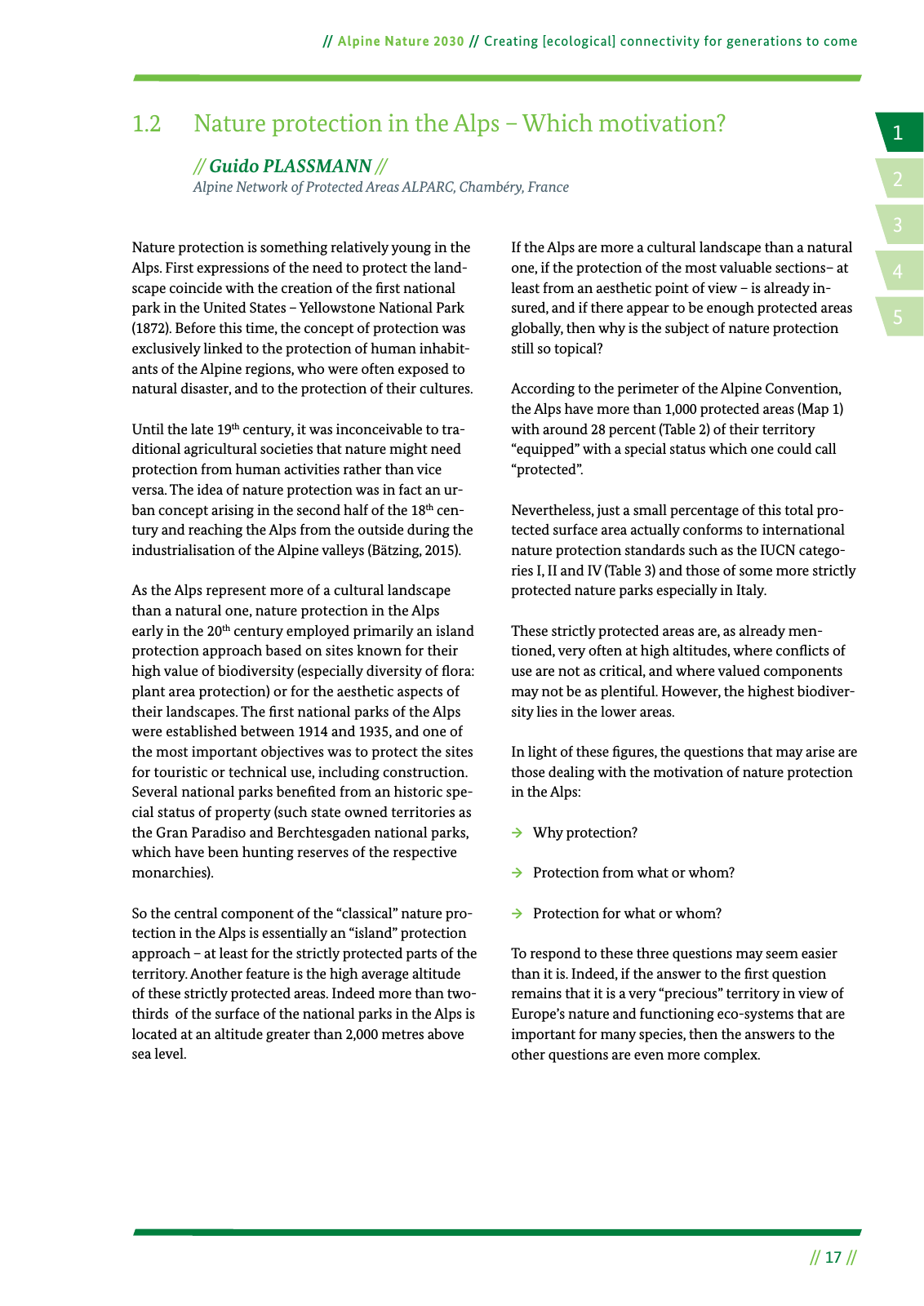14 2 5 3 17 Alpine Nature 2030 Creating ecological connectivity for generations to come 1 2 Nature protection in the Alps Which motivation Nature protection is something relatively young in the Alps First expressions of the need to protect the land scape coincide with the creation of the rst national park in the United States Yellowstone National Park 1872 Before this time the concept of protection was exclusively linked to the protection of human inhabit ants of the Alpine regions who were often exposed to natural disaster and to the protection of their cultures Until the late 19th century it was inconceivable to tra ditional agricultural societies that nature might need protection from human activities rather than vice versa The idea of nature protection was in fact an ur ban concept arising in the second half of the 18th cen tury and reaching the Alps from the outside during the industrialisation of the Alpine valleys Bätzing 2015 As the Alps represent more of a cultural landscape than a natural one nature protection in the Alps early in the 20th century employed primarily an island protection approach based on sites known for their high value of biodiversity especially diversity of ora plant area protection or for the aesthetic aspects of their landscapes The rst national parks of the Alps were established between 1914 and 1935 and one of the most important objectives was to protect the sites for touristic or technical use including construction Several national parks bene ted from an historic spe cial status of property such state owned territories as the Gran Paradiso and Berchtesgaden national parks which have been hunting reserves of the respective monarchies So the central component of the classical nature pro tection in the Alps is essentially an island protection approach at least for the strictly protected parts of the territory Another feature is the high average altitude of these strictly protected areas Indeed more than two thirds of the surface of the national parks in the Alps is located at an altitude greater than 2 000 metres above sea level Guido PLASSMANN Alpine Network of Protected Areas ALPARC Chambéry France If the Alps are more a cultural landscape than a natural one if the protection of the most valuable sections at least from an aesthetic point of view is already in sured and if there appear to be enough protected areas globally then why is the subject of nature protection still so topical According to the perimeter of the Alpine Convention the Alps have more than 1 000 protected areas Map 1 with around 28 percent Table 2 of their territory equipped with a special status which one could call protected Nevertheless just a small percentage of this total pro tected surface area actually conforms to international nature protection standards such as the IUCN catego ries I II and IV Table 3 and those of some more strictly protected nature parks especially in Italy These strictly protected areas are as already men tioned very often at high altitudes where con icts of use are not as critical and where valued components may not be as plentiful However the highest biodiver sity lies in the lower areas In light of these gures the questions that may arise are those dealing with the motivation of nature protection in the Alps Why protection Protection from what or whom Protection for what or whom To respond to these three questions may seem easier than it is Indeed if the answer to the rst question remains that it is a very precious territory in view of Europe s nature and functioning eco systems that are important for many species then the answers to the other questions are even more complex

Hinweis: Dies ist eine maschinenlesbare No-Flash Ansicht.
Klicken Sie hier um zur Online-Version zu gelangen.
Klicken Sie hier um zur Online-Version zu gelangen.